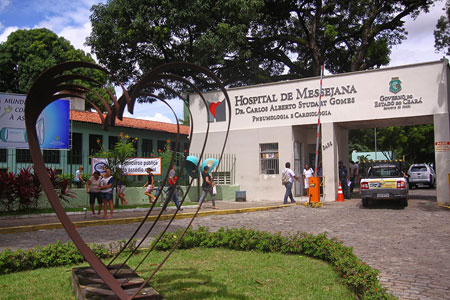
Chinese Thoracic Society Invites AARC Executive Director to Annual Meeting
June 20, 2016President’s Message Effect of Proposed New International Standards for Small-Bore Connectors on Respiratory Therapy, Oxygen Devices, and Accessory Connectors
June 30, 2016By Dave Crotwell, RRT-NPS, FAARC
Director, Respiratory Care Services, Seattle Children’s Hospital, Seattle, WA
Earlier this year I was asked by Susanne Matthews, a Seattle Children’s Hospital (SCH) cardiac intensive care unit (CICU) charge nurse, to accompany her and Titus Chan, an SCH CICU attending, to Fortaleza, Brazil, to take part in a medical volunteer trip through Children’s HeartLink. Susanne had been to Fortaleza three times prior to this trip and felt having a respiratory therapist on board would be beneficial to the respiratory physiotherapists at the partner hospital.
Founded in 1969, Children’s HeartLink is headquartered in Minneapolis, MN, and trains doctors and nurses in underserved parts of the world using medical volunteer teams.

Currently supporting partner hospitals in Brazil, China, India, Malaysia, and Vietnam, Children’s HeartLink recruits teams to work closely with partner hospitals to provide education, training, and mentorship programs to help diagnose and treat children with heart disease.
We arrived in Fortaleza on April 13, and after a brief rest we met with the Children’s HeartLink staff and then traveled to meet the partner hospital’s pediatric cardiac team. The partner hospital in Fortaleza is Hospital de Messejana (Hospital Dr. Carlos Alberto Studart Gomes), a tertiary hospital specializing in the diagnosis and treatment of heart and lung disease.
Messejana’s team is comprised of pediatric cardiac intensivists, cardiologists, nurses, and respiratory physiotherapists. My job while in Brazil was to speak on the role of the respiratory therapist in the CICU at the Brazilian Society of Cardiac Surgery Congress, as well as provide teaching related to respiratory therapy practice at Hospital de Messejana.
Besides speaking at the Congress, Susanne, Titus, and I spent five days rounding with the team to learn their work flow/practice and gave several daily classroom lectures on nursing and respiratory related topics such as ventilator-associated pneumonia prevention, capnography during mechanical ventilation, noninvasive ventilation (NIV), airway clearance therapy (ACT) techniques, extubation readiness testing (ERT), and ventilator graphics interpretation.

PT staff members take a photo break during a week-long Respiratory Therapy Seminar.
I was amazed at the level of engagement the respiratory physiotherapists had in learning how we practice and their ability to quickly put changes into clinical practice despite some resource limitations. After the first day of work I walked into the ICU and witnessed a physiotherapist applying an ACT technique I spoke about just the day before, and they had another patient on an ERT. The patient passed the ERT and was extubated that morning.
Children’s HeartLink staff did some great work with the hospital team related to continuous process improvement (CPI) as well, and helped guide them on some quick win CPI projects they could start.
While this was a short, seven day trip, I feel really good about the work SCH and Children’s HeartLink accomplished with the partner hospital. Back in Seattle, I have been sharing information related to NIV mask interfaces and strategies with Barbara, one of the Brazilian physiotherapists. I hope this is the beginning of a wonderful partnership, and I plan to continue working with them to improve care at Hospital de Messejana.



